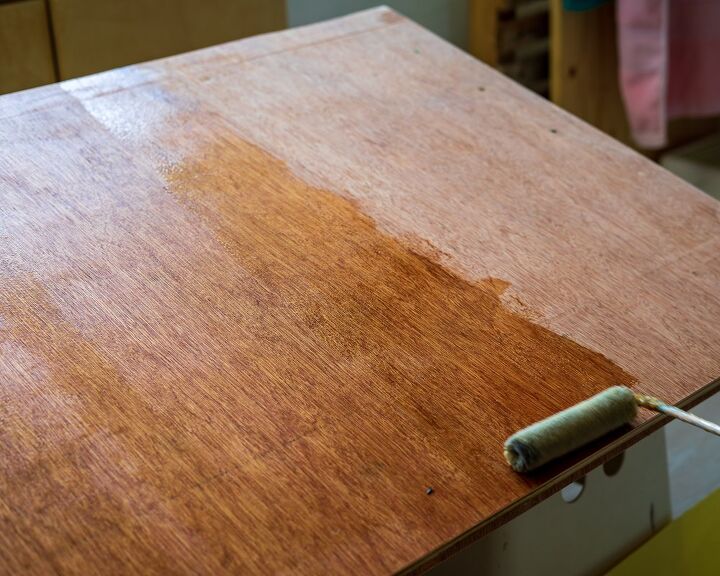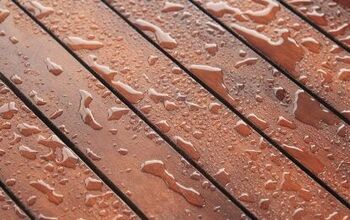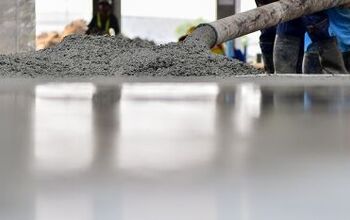Can You Shellac Over Stain?

Wood stains are a major part of most woodworking project, but once in a while, you are going to see a project that just needs more. Shellac is a resin mixture that offers a gorgeous color that can enhance tones. So, it makes sense that a lot of people would want to use both stain and shellac together. But, is this possible? Moreover, is it a smart idea?
You can add shellac over stain, but how you do it depends on the wood. This is a method that tends to work best on woods that really take stains well. If your wood isn’t good with stain, then use the shellac before you add stain to the wood.
Figuring out how to add an extra dash of color or gloss to your wood can be a bit difficult. Shellac is a bit testy at times, so it’s good to make sure that you know what you’re getting into.
Do You Need to Hire a Paint Contractor?
Get free, zero-commitment quotes from pro contractors near you.

Before You Begin: Learn About Your Wood And Stains First!
Wood is not a “one size fits all” type of deal. Different species of wood will have different tolerances to stains, seals, and shellac. Before you make a decision to stain and shellac your wood, find out the answers to the following questions:
- Is your wood known for being hard to stain? Woods like cherry, pine, and birch can all be very difficult with stain. As a result, these woods might do better with shellac.
- Is the stain you’re using water-based or oil-based? Water-based stains can only be shellacked by water-based shellac. Oil-based stains require oil-based shellac. You can’t mix the two.
- Is your wood bad with shellac? Technically, all woods can have shellac added to them, but some can be testier than others. If you have a particularly old wood, you might need to have
- Are you using this wood project for cooking purposes? If you are, skip the shellac altogether. Shellac is not food-safe and can cause serious illness if it is used in cooking utensils.
How Do You Use Shellac Over Wood Stain?
Now that we have gotten over the basic precautionary stories, let’s talk about how to use shellac over wood stain. Here’s the scoop:
- First, apply the wood stain according to the instructions on the canister. You will need to follow the instructions to the letter.
- Wait for the stain to cure. This will take two days. We suggest going fishing, or maybe doing some other work around the house during these days. Of course, it’s up to you.
- Sand down the stained area with 320-grit sandpaper. It just needs to be scuffed enough for the shellac to hold.
- Use a wet rag to clean up all the sawdust and extra gunk off your wood. Once the wood has been cleaned up and wiped down, you will need to wait at least two hours for the wood to dry.
- Apply a coat of shellac with a dipped cotton gauze ring. You can also use a cotton ball for this. Make sure to get full coverage on your wood, as spotty coverage becomes more pronounced with shellac.
- Wait 30 minutes to have the shellac dry. Put the cotton in a plastic bag and seal it so it stays fresh for your next application.
- Apply two more coats of shellac by following steps four and five of this guideline. Wait an additional 30 minutes for the final coat to dry.
How Long Does Shellac Take To Dry?
Shellac can vary in drying times based on humidity, temperature, as well as the actual brand of shellac you’re using. Most will take around 20 to 30 minutes to dry. To check if your shellac is totally dry, run a sandpaper slice across it. If it leaves a fine dust, then you have a dry surface.
If the sandpaper “chokes” and gets clogged with gel, reapply the shellac on the scuffed area and wait another 30 to 45 minutes. Touching the surface will also give you a slightly to moderately reliable idea of how dry your shellac coat is. To speed up shellac dry times, add some ventilation to your area.
Why Is It Harder To Stain Over Shellac?
In order for stain to work well, it has to sink into the pores of the wood. That’s how stain actually gets into multiple layers of wood. Stain that is on a non-porous surface will not grip as well. Shellac makes surfaces less porous, so you might have to actually reapply multiple layers of stain.
With that said, you may need to apply stain over shellac if you have a wood type that is notoriously non-porous. It still should be a last-ditch effort since there are some shellacs that make it very hard for your stain to absorb at all.
Do You Need to Hire a Paint Contractor?
Get free, zero-commitment quotes from pro contractors near you.

Related Question
Shellac is made from a resin produced by the lac bug. This resin is known for being very shiny, durable, and easy to tint in a wide range of colors. Of course, the lac resin isn’t the only ingredient. Products with shellac base can be made with a water solution or an oil solution.
Is shellac a good finish?As long as you have a project that will not be used in food preparation, you can rely on shellac to be a great finish. It is a good way to add a nice extra tint to your wood that is non-toxic, eye-catching, glossy and smooth. It also happens to be a highly resilient finish, so you won’t have to worry about re-staining every other year.
Does adding shellac to a project make it waterproof?Contrary to popular belief, shellac is not waterproof nor will adding it help ensure that your wood will be waterproofed. Though it is not a very effective waterproofing tool, there is some good news. This is a type of resin finish that is highly water-resistant. In fact, it can be more resistant than many stains.

Ossiana Tepfenhart is an expert writer, focusing on interior design and general home tips. Writing is her life, and it's what she does best. Her interests include art and real estate investments.
More by Ossiana Tepfenhart



























